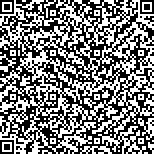| 杨 明,汪舒文,宇传华.1990—2019年中国皮肤恶性肿瘤疾病负担状况及发病趋势预测[J].中国肿瘤,2022,31(11):853-861. |
| 1990—2019年中国皮肤恶性肿瘤疾病负担状况及发病趋势预测 |
| Trend of Disease Burden of Skin Malignant Tumor in China from 1990 to 2019 |
| 投稿时间:2022-03-10 |
| DOI:10.11735/j.issn.1004-0242.2022.11.A002 |
|
 |
| 中文关键词: 皮肤恶性肿瘤 发病率 死亡率 时间趋势 疾病负担 预测 中国 |
| 英文关键词:skin malignant tumor incidence mortality temporal trend disease burden prediction China |
| 基金项目:国家自然科学基金(82173626) |
|
| 摘要点击次数: 2005 |
| 全文下载次数: 464 |
| 中文摘要: |
| 摘 要:[目的] 描述分析1990—2019年我国皮肤恶性肿瘤发病、死亡和疾病负担变化趋势,并对未来的发病率进行预测。[方法] 利用2019全球疾病负担研究数据,分析1990—2019年我国皮肤恶性肿瘤的发病、死亡和疾病负担变化情况及其平均年度变化百分比(average annual percentage change,AAPC)。同时,采用集成嵌套拉普拉斯近似(integrated nested Laplace approximation,INLA)的贝叶斯年龄-时期-队列分析(Bayesian age-period-cohort analysis,BAPC)方法对2020—2030年中国皮肤恶性肿瘤的发病趋势进行预测。[结果] 2019年中国皮肤恶性黑色素瘤的标化发病率、死亡率和伤残调整生命年(disability adjusted life years,DALY)率(95%UI)分别为0.92/10万(0.58/10万~1.17/10万)、0.28/10万(0.18/10万~0.36/10万)和7.96/10万(5.06/10万~9.10/10万),1990—2019年相应的AAPC(95%CI)分别为3.35%(3.03%~5.48%)、-0.45%(-0.56%~-0.33%) 和-0.56%(-0.69%~-0.43%) ;非黑色素瘤皮肤癌的标化发病率、死亡率和DALY率(95%UI)分别14.32/10万(12.36/10万~16.31/10万)、0.88/10万(0.71/10万~1.01/10万) 和16.76/10万(14.18/10万~19.38/10万),1990—2019年相应的AAPC(95%CI)分别为3.87%(3.39%~4.35%)、1.48%(1.17%~1.79%)和1.09%(0.81%~1.37%)。中国皮肤恶性黑色素瘤较高的标化DALY率出现在85~89岁和90~94岁年龄组人群中,非黑色素瘤皮肤癌则在95岁及以上年龄组。相较于全球和印度、日本、韩国,我国皮肤恶性黑色素瘤的相关指标仍处于较低水平,但非黑色素瘤皮肤癌的形势不容乐观,预计未来中国皮肤恶性肿瘤的发病率仍将继续上升。[结论] 近30年来,中国皮肤恶性肿瘤的标化发病率呈现上升趋势,疾病负担改善缓慢。未来应当综合运用三级预防,通过全社会的共同参与,以减少疾病负担。 |
| 英文摘要: |
| Abstract: [Purpose] To analyze the trends of incidence, mortality and disease burden of skin malignant tumor in China from 1990 to 2019.[Methods] Using data from the Global Burden of Diseases, Injuries, and Risk Factors Study 2019(GBD 2019), the incidence, mortality, disease burden and their average annual percentage change(AAPC) of skin malignant tumor in China from 1990 to 2019 were analyzed. Bayesian age-period-cohort(BAPC) analysis using integrated nested Laplace approximation(INLA) was adopted to assess the incidence trend of skin malignant tumor between 2020 and 2030. [Results] In 2019, the age-standardized incidence, mortality, and disability-adjusted life years(DALY) rate(95%UI) of malignant skin melanoma in China were 0.92/105(0.58/105~1.17/105), 0.28/105(0.18/105~0.36/105), and 7.96/105(5.06/105~9.10/105), respectively; the corresponding AAPC(95%CI) from 1990 to 2019 were 3.35%(3.03%~5.48%), -0.45%(-0.56%~ -0.33%), and -0.56%(-0.69%~-0.43%), respectively. The age-standardized incidence, mortality, and DALY rate(95%UI) of non-melanoma skin cancer in 2019 were 14.32/105(12.36/105~16.31/105), 0.88/105(0.71/105~1.01/105), and 16.76/105(14.18/105~19.38/105), respectively; the corresponding AAPC(95%CI) from 1990 to 2019 were 3.87%(3.39%~4.35%), 1.48%(1.17%~1.79%) and 1.09%(0.81%~1.37%), respectively. From 1990 to 2019, the 85~89 and 90~94 age groups had higher age-standardized DALY rates for malignant skin melanoma, while the 95+ age group had higher DALY rate for non-melanoma skin cancer. The key indicators of skin malignant melanoma in China are still at a low level when compared to the worldwide average and India, Japan, and Republic of Korea, but the situation of non-melanoma skin cancer is still critical. The incidence of skin cancer in China is predicted to increase in the future. [Conclusion] The age-standardized incidence of skin malignant tumor in China has increased over the last three decades, and the disease burden has improved slowly. In the future, the joint efforts of the whole society are needed to reduce the public health burden caused by skin malignant tumor through the comprehensive application of three-tier prevention strategies. |
|
在线阅读
查看全文 查看/发表评论 下载PDF阅读器 |